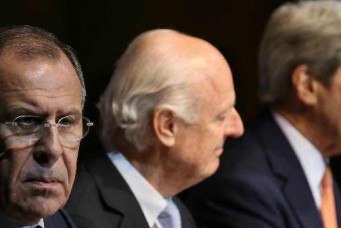Questioning Iran’s Regional Ambitions
Now that the Islamic State has all but been defeated, some Iranians are beginning to wonder what they will receive in return for supporting regional allies.
“Not Gaza, not Lebanon, our lives for Iran” and “Leave Syria, think about us” were among the chants heard in videos widely circulated on social media from the past weeks protests in Iran. Not only did the protests voice the anger and frustration Iranians hold against the state of their economy, corruption, and the theocratic government, they drew attention to the blood and treasure spent by Iran-backing Bashar Al-Assad’s government in Syria, Shia militias in Iraq, Hezbollah in Lebanon, and militant factions in the Gaza Strip, in addition to limited ties to Houthi rebels in Yemen. Similar sentiment has occasionally popped up in the past—in November, a video circulated of a woman in Tehran opposing Supreme Leader Ayatollah Ali Khamenei spending money abroad when it was needed at home—but not nearly on the scale of this past week.
Despite the Iran protests dominating the international news cycle, these slogans do not necessarily reflect the sentiments of Iranian society as a whole. According to a poll conducted by the Center for International and Security Studies at Maryland (CISSM) in July, only eighteen percent of Iranians believe Iran should stop providing help to groups such as Hezbollah and the Assad government. And only thirty-one percent believe Iran should not send military personnel to Syria to aid Assad in fighting the Syrian rebels and groups such as the Islamic State (IS).
Since the Syrian civil war erupted in 2011, Iran has provided billions in funding, weaponry, and manpower to reinforce the Assad government. Iran’s involvement in Syria has not been without its losses: over 2,100 Iranian and Iran-backed fighters have died, about half of whom were “volunteer” troops from Afghanistan and Pakistan. Numerous high-profile generals of the Islamic Revolutionary Guard Corps (IRGC) have also been killed, and in September, thousands of Iranians attended the funeral of Mohsen Hojaji, an IRGC solider beheaded by IS. Yet by supporting Assad, Tehran maintains a staunch ally in Damascus and its smuggling routes into Lebanon.
The rise of IS in Iraq and Syria provided the Iranian government an opportunity to increase its influence in those countries. The belief, or at least the message from government officials, was that if they did not fight Sunni extremists abroad then they would eventually fight them at home. This was partially evident in June 2017, when IS killed at least twelve people and injured forty-six in an attack on critical and symbolic locations in Tehran: the parliament building and the mausoleum of Ayatollah Ruhollah Khomeini, the founder of the Islamic Republic.
Now that IS has all but been defeated in Iraq and Syria, and the Syrian rebels are increasingly losing territory, some Iranians are starting to wonder what they will receive in return for their steadfast friendship—especially against the rise of a Saudi-led, Sunni bloc encouraged by the Trump administration. Yet these concerns are only secondary to most Iranians. Even while the protests wane and the government succeeds in its crackdown, the core grievances—inflation, unemployment, and corruption—remain.
This article is reprinted with permission of Sada. It can be accessed online here.
Holly Dagres is a contributing editor at the Cairo Review of Global Affairs. She is also curator of The Iranist newsletter. She has written for Al-Monitor, Atlantic Council, Carnegie Endowment for International Peace, Foreign Policy, Huffington Post, among others. On Twitter: @hdagres




